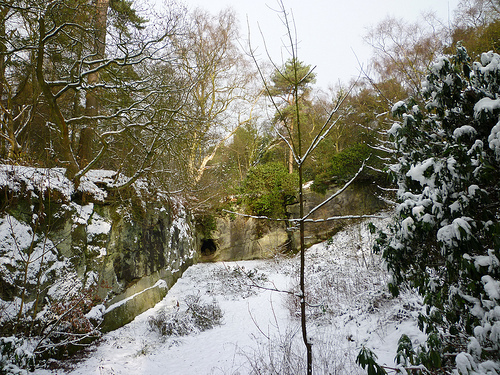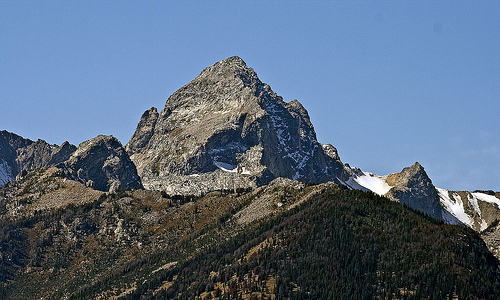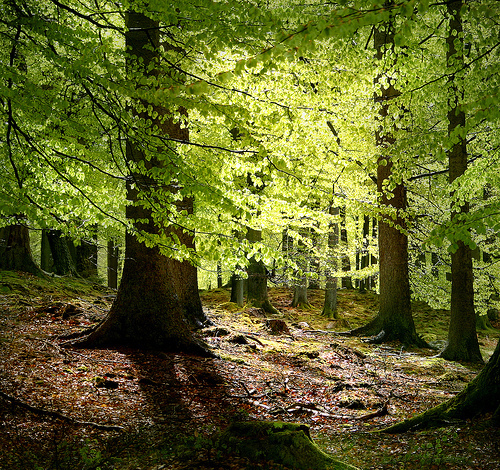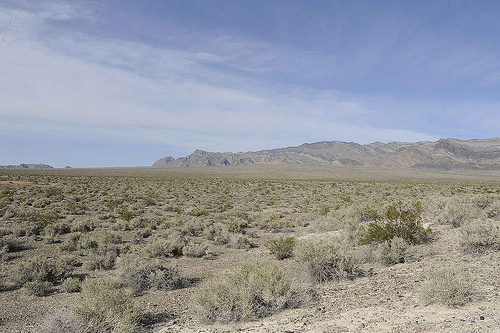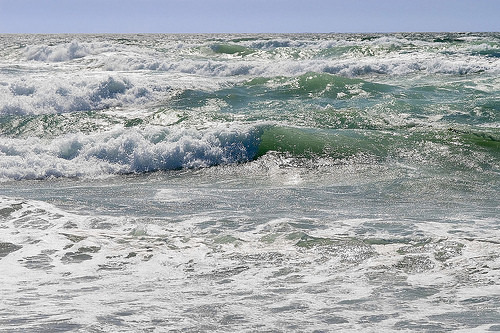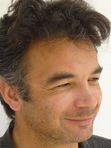Edoardo Albert's Blog, page 93
April 9, 2014
An Unexpected Sight
There I was at the London Book Fair on Tuesday, wandering along, taking in the bustle and the deal making, enjoying the atmosphere and slowly heading over towards the Lion Hudson stand, where I had a 10.30 meeting with my publisher, when I stopped (creating something a people jam behind me). There, ahead of me, were the swirling lines of an Anglo-Saxon design, and ‘Edwin: High King of Britain’ in letters considerably bigger than my head, and ‘Edoardo Albert’ (about the size of my head), on a series of display boards. Unknown to me, Lion Hudson was featuring Edwin as one of its major new titles for the year. So, here’s a picture of me standing in front of the display.

At the London Book Fair 2014
And here are a couple more photos, with Tony Collins, publisher of Lion Fiction, and Jessica Tinker, my editor at Lion.

With Tony Collins at London Book Fair 2014

With Jessica Tinker at London Book Fair 2014
At the London Book Fair 2014
April 3, 2014
Ramon Lull – the Fool of Love

Ramon Lull
All right, he’s not strictly speaking a saint, only a blessed, but Ramon Lull (1232-1316) deserves a place in any list of Catalan holy men. However, the Fool of Love was for the first 30 years of his life fool to an altogether more earthly sort of love. Lull was attached to the household of the future James II of Majorca and he eventually became its seneschal. Marriage and two children did nothing to cool his ardent pursuit of the court’s women, to whom he composed many songs in the romantic troubadour style of the period.
‘The more apt I found myself to sin the more I allowed my nature to obey the dictates of my body,’ he wrote later. Not even the shock of one of his amours yielding to his advances, only to reveal breasts ravaged by cancer, could stop his philandering. But then, in the summer of 1263, while Ramon was busy writing another song in honour of a new love, he looked up from his work to see ‘our Lord Jesus Christ hanging upon the Cross’. Lull, his poetic flow seriously interrupted, escaped to his bed, no doubt assuming that a good night’s sleep would clear his mind of such troublesome visions. But when he next returned to songwriting, the figure returned and a terrified Lull again retired to bed. However, Ramon was no dilettante libertine and three times more he returned to his love song, only to be faced with the same figure. Lull decided that these must be authentic visions rather than mental phantoms and he set himself to working out what they meant. In the end he decided that ‘our Lord God Jesus Christ desired none other thing than that he should wholly abandon the world and devote himself to His service’. This he decided to do by trying to convert the unbelievers (in Ramon’s world, this meant chiefly Muslims), by writing a book, ‘the best in the world, against the errors of unbelievers’, and setting up colleges to teach Arabic to missionaries.
Ramon then sold his possessions, though keeping some back to support his wife and children, distributed the proceeds to the poor and spent the next nine years in study. It was only then, approaching his 40th year, that Lull began the literary and missionary work for which he would become famous, known in later centuries as the Doctor Illuminatus, the Illuminated Doctor, from the series of mystical visions he had on Mount Randa in Majorca. The sheer scale of his labours almost defy belief. Lull was the author of 265 works in Catalan, Arabic and Latin; the writer of the seminal Catalan novel, Blanquerna; a missionary in almost constant travel between Europe and north Africa; a teacher at the University of Paris when it was the foremost institution of learning in Christendom; a suitor at papal and imperial courts; and the originator of the Art, a systematisation of, well, everything with respect to God’s attributes. This was the book, ‘the best in the world’, that Lull believed showed the truth and which he illustrated through diagrams, tables and, literally, millions of words.
This indefatigable man continued working throughout his long life. At 75 we find him, on a mission to north Africa, ‘beaten with sticks and with fists, and forcibly dragged along by his beard, which was very long, until he was locked in the latrine of the thieves’ jail’. Ramon continued in this vein until the end and whether his death occurred in Tunis, or on a ship sailing back, we can say that few men have ever packed so much life and adventure into the second half of a life.
April 1, 2014
Edwin for free!
That’s right you can get a copy of Edwin: High King of Britain for nothing, zippo, nada, absolutely and completely free. If you’re already on Goodreads, all you have to do is register here and if you’re pulled out of the electronic sorting hat, then a copy will be winging its way to you, courtesy of the lovely people at Kregel Publications. If you’re not on Goodreads, the booksharing site for bibliophiles, I’m inclined to say, ‘Why not?’ but instead will merely remark that you’d simply have to register to have the chance of winning a copy of Edwin. The competition closes on 30 April so there’s plenty of time. Good luck to you all!
March 26, 2014
Catastrophes and Cataclysms
The discovery of the deep past in the Victorian era by geologists such James Hutton and Charles Lyell carried with it an equally deep commitment to the principle of uniformitarianism: that the Earth of the past operated in the same way as the Earth does today and, as a corolllary, that the planet was formed and is formed by gradual processes; an immortal sparrow, wiping its beak every day upon a mountain will grind even Everest down to dust, given enough time. In part this commitment was born from revulsion against Biblical catastrophism and the explanation of everything by reference to events like the Flood.
Only, it turns out, the Earth’s history is full of catastrophic events that wiped lands from the face of the planet and brought peoples to extinction. Here’s just a couple that occurred over the last few thousand years, a heartbeat in geological time.
The Storegga Slide happened 8,000 years ago, when a huge area of coastal shelf off Norway slipped into the Atlantic abyss, triggering a huge tsunami that inundated the eastern side of Britain and drowned Doggerland, the low-lying land mass that stretched into the North Sea and physically linked Britain to the continent.
Here’s a short video about the Storegga Slide.
The Earth had suffered through the long cold of the last Ice Age and, at last, the glaciers were retreating and people started moving north again. The warming seems to have been extraordinarily fast, and the glaciers melted quickly. Unfortunately, melting glaciers produce water, lots of cold water, and that has to go somewhere. Most drained into the oceans, but the geography of North America was such that an immense lake formed roughly where Lake Winnipeg lies today – only it covered a vastly greater area. Lake Agassiz contained more fresh water than all the lakes and rivers in the world today, and a chain of still unbroken glaciers held it in place, stopping the water draining into the ocean. But then, the dam broke.
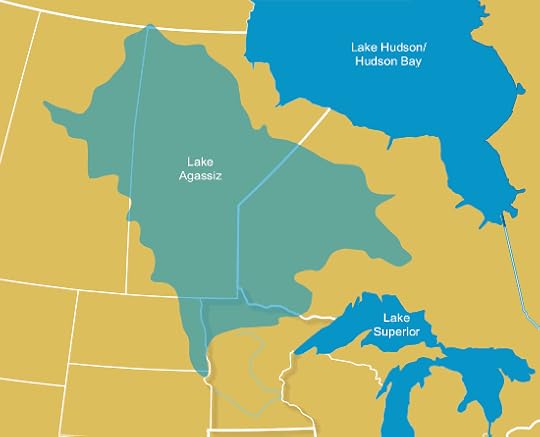
Lake Agassiz
Vast amounts of cold fresh water drained into the North Atlantic Ocean, reducing its salinity and stopping the Gulf Stream dead in its tracks. The Ice Age went into reverse, the glaciers started grinding south again, and the cold returned, just as quickly as it had left.
March 19, 2014
Belgian Beaches
The unlikely fact of Belgian beaches produced a couple of articles, including this one for the in-flight magazine of BMI airlines.
Mention Belgium, and beer, chocolate and Poirot are likely to come to mind. Beaches probably won’t figure. In fact, it might come as a surprise that Belgium even has a coastline, but it does, some 69 kilometres of it, squeezed in between France and the Netherlands, and from one end to the other, the land slides gingerly into the North Sea via miles of carefully tended, perfectly manicured sand. Add to these unexpected beaches Belgian expertise in food, design and fashion, and you have the ingredients for a surprisingly varied get away.
The coast tram (de Kusttram)
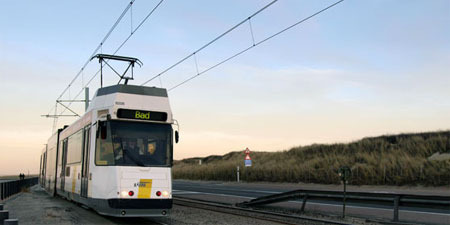
The Kusstram
Sitting by the North Sea, Belgium can’t rely on its weather, so it has to try that bit harder to attract visitors. A Eurostar train ticket carries with it free onward railway travel anywhere within Belgium, so no queuing to pay for a connection at Brussels station. Even more remarkable, however, is the coast tram (www.dekusttram.be). This runs the length of Belgium’s shore, from De Knokke in the east to De Panne in the west, with 70 stops along the way and a journey time from end to end of a little over two hours. With nowhere more than a short walk from a stop, all the resorts become easily accessible. During the summer services run every five to ten minutes, so should the crowds become too thick on one particular stretch of beach, it’s an easy matter to hop on the tram and alight a short time later among grass-covered dunes and stroll down to a relatively empty shore.
Ostend
The largest city on the coast (the only city on the coast according to locals), Ostend combines smooth expanses of sand, dotted with the gaily painted beach cabins that are rolled out each season, pedestrianised Kapellestraat (the best shopping street in Flanders according to the readers of local paper Het Nieuwsblad), excellent restaurants and fascinating art museums. It’s the sort of place people come to for the beach, but return to for everything else it has to offer. Let’s start with food, and the stalls along the harbour selling freshly landed fish; you can buy snack-size pots as well as whole fish. If that whets your appetite for seafood, splurge at the excellent Beluga (Kemmelbergstraat 33, Oostende, 059 51 15 88, www.belugaoostende.be).

Ostend
James Ensor and Léon Spilliaert, two key painters in early 20th century art, were both Ostenders – Ensor hardly ever left the place – and their work forms the core of the aptly named Art Museum by the Sea (PMMK – Kunstmuseum aan Zee, Romestraat 11, Oostende, 059 50 81 18, www.pmmk.be). Art can even be used as cover for a visit to the casino. Paul Delvaux decorated the gaming room of the Kursaal (Monacoplein, Oostende, 059 29 50 53, www.kursaaloostende.be) with murals and the building itself, rebuilt after World War II, can hardly be missed, particularly at night when light streams from its windows over the promenade. The Kursaal also stages concerts, and has a fine restaurant and lounge.
East from Ostend
Hop on the tram and the coast is your oyster. First stop, just east of Ostend, is Earth Explorer and Fort Napoleon. Earth Explorer (Fortstraat 128B, Oostende, 059 70 59 59, www.earthexplorer.be) does exactly what it says, exploring the natural forces that have shaped the planet through interactive exhibits focussing on wind, water, fire and earth – the volcano flume ride does get rather wet though. A short walk into the dunes is Fort Napoleon (Vuurtorenweg, Oostende, 059 32 00 48, www.fortnapoleon.be), the only intact Napoleonic fort left in Europe. In a typical Belgian touch, it’s now home to a fine bistro and restaurant. The beach beyond is particularly lovely as it remains free of the apartment blocks that elsewhere jostle each other for that elusive sea view.

De Haan
Moving eastwards, quiet De Haan is the prettiest of the towns on the coast, its streets lined with carefully restored belle époque buildings and its beach as smooth and broad as anyone could wish. Should it all get too tranquil, Blankenberge will set things buzzing again. Endless retail opportunities – there’s a particularly wide selection of chocolatiers – a nearly endless pier and apparently endless crowds make this the liveliest of the resorts. But should De Haan’s belle époque buildings have wakened a taste for a lost age of elegance, then its brash neighbour can sate it at the Belle Époque Centrum (Elisabethstraat 24, 8370 Blankenberge, 050 42 87 41, www.belle.epoque.blankenberge.be). Three restored seaside villas provide an insight into a time when people dressed up, rather than down, on the beach. Visitors more interested in life below the waves should head to Sea Life (Koning Albert I Laan 116, Blankenberge, 050 42 43 00, www.sealifeeurope.com).
The tram ends at Knokke-Heist, the most fashionable resort on the coast. It’s got the highest concentration of Michelin-starred restaurants in Belgium (four in the last edition); you won’t go hungry.
West from Ostend
If time allows only one journey, head east, but the tram west from Ostend reveals some unexpected treasures, as well as the usual miles of beach. The first of these is a salutary reminder of the area’s past in the shape of the guns mutely pointing out to sea that the tram rattles past. These were part of Hitler’s Atlantic Wall and were placed there to drive invaders back from Fortress Europe. The Atlantic Wall Museum (Nieuwpoortsesteenweg 636, Raversijdem, 059 70 22 85, www.west-vlaanderen.be/raversijde) has preserved command posts, trenches, tunnels, bunkers and gun emplacements, and gives a vivid sense of what the men coming ashore many miles to the west in Normandy had to face.

Plopsaland
The tram trundles west past some generally quieter resorts like Oostduinkerke – where shrimpers still fish from horses wading through the surf – before drawing near its close at De Panne. The town is surrounded by dunes, many protected, and a walk through them provides a fascinating insight into the nature and formation of the coastline. But the tram continues on to Plopsaland (Gemeentebestuur, Zeelaan 21, De Panne, 058 42 16 16, www,plopsa.be) – yes, you are reading that right – a family-friendly theme park that now has the added teen attraction of adrenaline-inducing roller-coaster Anubis. And where better to end a visit to this gently surreal country?
March 17, 2014
Please Look After This Bear
Goosebumps. I’ve just come face to nose with the best friend of my childhood.
March 13, 2014
Travel Northumberland
I first wrote this article for Time Out magazine. Since our first son was one at the time, it’s older than I thought!
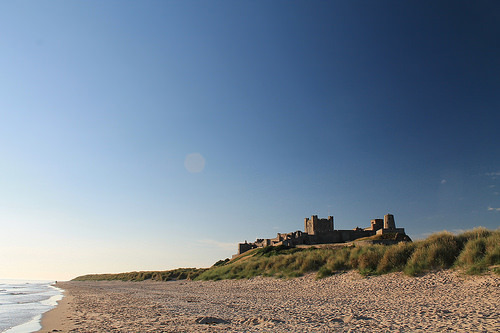
Bamburgh Castle and beach – at high tide!
‘It’s perfect, isn’t it?’ My gesture took in not one but two castles, three lighthouses and a beach, broad and empty as the moon.
‘If perfection includes sand blasting and freezing water,’ said my wife.
And there you have it in a nutshell. The Northumberland coast produces extreme reactions. People either think it the most wonderful place they’ve ever seen, and make annual visits as faithfully as the pilgrims to Holy Island, or they get on a plane to a country where toes dipped in the sea don’t turn blue, and wind defences are not a prerequisite for a day at the beach.
I am in the former camp. The beach over which Bamburgh Castle (01668 214515, www.bamburghcastle.com), looms, a potent symbol of the region’s violent past, is my favourite. At low tide it stretches impossibly far, as if wanting to bring the Farne Islands (breeding ground for 50,000 puffins in June and July) back to shore, an impossibly huge and implausibly empty expanse of perfect, tide-sculpted sand. The castle squats on a huge lump of basalt, lord of all it surveys, so it comes as no surprise to learn that the site has been occupied for millennia, with Bebbanburgh – as it was called then – the capital of the ancient kingdom of Bernicia, which ruled from East Lothian down to Durham and had trade links as far as Byzantium. The Bamburgh Research Project (www.bamburghresearchproject.co.uk) is continuing with excavations on and around the site, and anyone with an interest in archaeology can apply to take part.
This suggests the secret to enjoying a Northumbrian beach holiday: keep active and explore. The sand is perfect for attempting to build a small-scale version of Bamburgh, at low tide inviting pools sparkle amid seaweed covered rocks, and the constant wind makes kite flying a joy. As for exploration, the distant prospect of Lindisfarne Castle (01289 389244, www.nationaltrust.org.uk), is irresistible, though check the tide times. Holy Island, the site of the castle, is a part-time island, the causeway flooded twice daily. The local paper particularly enjoys splashing on its front page photos of hapless tourists sitting on the roof of their car, waiting for the life boat.
Holy Island was where St Aidan, with 12 monks from Iona, came as a missionary to preach the Gospel and stayed to rebuild a civilisation. The luminous fruit of their efforts, the Lindisfarne Gospel, is in the British Museum but there’s a facsimile at the Lindisfarne Centre (Marygate, 01289 389004, www.lindisfarne-centre.com).
But it’s not just history and nature. The light here is extraordinary, the landscape inspiring and property is cheap. There’s a vibrant artistic scene: visit Mick Oxley’s gallery (01665 571082, www.mickoxley.com) in Craster (and try the kippers from Rick Stein food hero Robson & Sons at the same time), the Bakehouse Gallery (01665 602277, www.thebakehousegallery.com) in Alwnick or the Chatton Gallery (01668 215494, www.chatton-gallery.co.uk) in, yep, Chatton.
Looking for the last time over the unspoiled expanse of shore, I announced to my wife, huddled in a hastily bought fleece, that it all looked good enough to eat. She pointed to our one-year-old son, sitting on the sand.
‘He is.’
March 9, 2014
The Weird of Alderley
This article first appeared in The Great Outdoors magazine.
England is tame. It’s been shorn of mystery, its wildness cut away as mercilessly as Aslan’s mane. But there are places where something wild and mysterious lingers on, and some of these places lie hidden in plain sight, side by side with all the excesses of modern-day England. Of these, none is stranger, nor juxtaposed more jarringly with its surroundings, than Alderley Edge in Cheshire.
What is Alderley Edge? In the blunt fashion of so many English place names, the answer is given in the asking. It’s a sandstone ridge, an edge that, depending on how you look at it, is the last ripple of the Pennines before it sinks into the Cheshire Plain or the first step upward from the flat lands. As such, it is border country, and this quality of strangeness is still palpable today. It was this strangeness that made the Edge the ideal setting for Alan Garner’s classic children’s books, The Weirdstone of Brisingamen and The Moon of Gomrath. 2010 is the fiftieth anniversary of the publication of The Weirdstone, and the book has remained in print throughout.
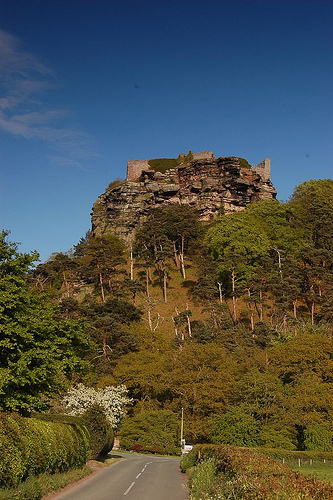
Beeston Castle from the Cheshire Plain.
To get an idea of the geography of the area there is no better vantage point than Beeston Castle (Tarporley, Cheshire, CW6 9TX; 01829 260464; www.english-heritage.org.uk; £5.30 adults, £4.50 concessions, £2.70 children), which is about 25 miles south west of Alderley Edge. The ruins of the medieval castle stand atop and around a great rock crag jutting some 500 feet out of the plain – it may be the best view for the shortest climb in the country! To the west are the Welsh hills, south lies The Wrekin and east is Alderley Edge, marked out by the unmistakeable circle of Jodrell Bank just in the foreground, with the Pennines lying beyond (the visibility of the dish does rather depend on where it is pointing though). But what the view also shows is that this is a settled land, one deeply embedded in history and legend. And it is this that makes the British Isles so much more evocative than their size or comparatively gentle landscape would suggest.
However, you might be forgiven for wondering what on earth I’m on about should you arrive by train at Alderley Edge and walk down the main, appropriately named and directed, London Road. For a small town, the high street is densely packed with wine bars, boutiques and slightly predatory looking, if immaculately turned out, women. If the weather was 10 degrees warmer you could be in Marbella. This is where Alderley Edge, a place of legend, runs full tilt into our modern myth of fame. The town is just a few miles south of Manchester, convenient for the airport and Manchester United Football Club. The Beckhams lived here, as did Cristiano Ronaldo. Property prices are even higher than you’d think, the new-build mansions more ghastly than you could imagine.
Do look out for Fosters Fish & Chips though (4 Chorley Hall Lane, Alderley Edge, 01625 582682, www.fostersfishandchips.com). Not only is it one of the best fish and chip shops in the region, but Colin and Susan eat there at the start of The Moon of Gomrath, when workmen unleash an ancient evil that was trapped below ground in front of the Trafford Arms, opposite Fosters.
The town is small, and taking the B5087 Macclesfield Road, you’ll soon start winding upwards, past some eye-wateringly large and imposing houses. Continue on, and after a while the houses are left behind, and woods and fields appear. You’re now up on the Edge, but it would be perfectly possible to continue on to Macclesfield without ever knowing it. (In fact, a friend of mine did once come in search of the Edge and fail to find it, despite asking the way in the town. It’s likely that the WAGs of whom he inquired the Edge’s whereabouts – he was young and testosterone fuelled at the time – did not count hill walking among their main pursuits.) Instead, stop at the first lay by and take the sign-posted path heading north east, with an open field to your right. At the end of the field, head straight on, go down some steps and then turn left, following the path past some rock outcrops until you come to the Wizard’s Well. At this point, readers of The Weirdstone of Brisingamen will be entitled to laugh out loud in delighted recognition. For there it is, exactly as described in the book:
a stone trough into which water was dripping from an overhanging cliff, and high in the rock was carved the face of a bearded man, and underneath was engraved:
Drink of this
And take thy fill
For the water falls
By the wizards will
The legend of Alderley Edge, which was first documented in 1753 although it’s likely much older, tells of a farmer from Mobberley making his way over the Edge to sell his milk-white mare at Macclesfield market. An old man asks to buy the horse, but the farmer refuses, thinking to get a better price at the market. But the old man tells him no one will buy the horse, although all will admire it, and he will be waiting for the farmer when he returns that evening. And so he is, and he leads the farmer along the Edge until he comes to a large rock, which he touches with his staff. At his touch, the rock parts, revealing Iron Gates, and a by now thoroughly frightened farmer and steed are taken deep into the earth and brought to a chamber where lie many knights, sleeping. And beside all save one is a milk-white mare. The wizard takes the farmer into a cave filled with treasure and tells him to take what he will as payment for his horse, for these knights lie sleeping until the wizard wakes them to do battle for England’s deliverance. The farmer leaves, a chastened but richer man, and the Iron Gates clang shut behind him.
Being near urban centres, timing is important when visiting Alderley Edge. Arrive on a bank holiday Monday and it came seem about as mysterious as Blackpool beach. But come in autumn twilight, when the wind is blowing the trees ragged or, as I did on my last visit, with snow beginning to fall and the world looking as unfamiliar as only the first winter snow can make it, you too will wonder what is real and what is imaginary. Holes, deep and unexpected, open in the rock, and hollows, man made but tree grown, lie in wait.
For the Edge is worked rock, made of sandstone that was laid down some 240 million years ago when even dinosaurs were still young, and it’s been mined since the Bronze Age. Those strange hollows are quarries and they pockmark the Edge, their number a testament to the intensity with which it was worked. Tunnels, some leading down deep into the ground, others simply test mines that failed to find what they sought, make silent ‘o’s in the rock. And though you know you shouldn’t go in, each and every one exhales temptation. ‘Enter. Explore. Delve deep and you will find the secret roots of hill and tree and rock,’ they seem to say. But the temptation must be resisted. It can be hard, though, for everything about the place suggests a secret land. Tree roots reach like fingers over the exposed rocks, their nails digging deep into the cracks. Unexpected vistas to the Pennines open suddenly and then, just as suddenly, close. This is a strange country, where it is easy to feel that the veils between this world and another are thin.
But what is this other world? In The Weirdstone and The Moon of Gomrath it is a place of high magic and old magic, of dwarves and elves, the wild hunt and the sudden, shocking onrush of fimbulwinter. But Garner is tapping into much older traditions here, for the idea of the gate which opens into an Otherworld that is both coterminous and distant from our own is an old one, with deep roots in the cultures and imaginings of the inhabitants of these islands, be they Celt, Scot, Saxon or Norman.
Beowulf dived into the lake to confront and kill Grendel’s mother; Arthur – the once and future king – sleeps in Avalon; Bran sails over a sea that is a flower-speckled plain; True Thomas lives for seven years beneath the three peaks of the Eildon Hills when he goes with the fairy queen upon ‘that bonny road,/Which winds about the fernie brae,/ That is the road to fair Elfland,/ Whe[re] you and I this night maun gae.’
Here there is wildness, lurking barely beneath the skin of modern life, but it is a wilderness of a different order. It’s the inchoate stuff of legend and myth, where spirit and matter, history and death meet and plunge strange roots into land and heart. It’s the wild heart of these islands, transmitted and transfixed in particular areas and as such illustrates how our wilderness is different from that of a country like America, where the dominant experience of wilderness is of a place apart from humanity and into which we venture as visitors. Here, wildness lies at the intersection of land, culture, myth and memory, in the place where worlds meet.
The Edge is a perfect example of such a liminal place. It’s not particularly large, and you could explore most of it in a day, and yet I suspect that even a lifetime of daily walks would not reveal all its secrets nor uncover all its moods. The Edge was a bare, windswept ridge until the mid-18th century, when local landowners planted it with Scotch pine. Since then, oak and beech have colonised the Ridge, their roots often making use of the cracks in the rock strata exposed by quarries to anchor the trees against winter storms.
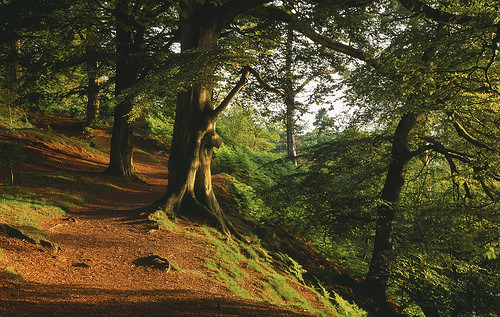
Beech woods of Alderley Edge
The quarries and mines are perhaps the most striking feature of the Edge. Although they are obviously the work of men, they add considerably to the otherworldly atmosphere of the place. Bronze Age man first mined here, digging for copper and lead, and the Romans followed. However, there’s little evidence for any further activity between the Romans and 1690. For the next two hundred years, the Edge was extensively mined and quarried, and though there was little real activity after World War I, the mines became something of a tourist attraction. However, several unwary visitors were hurt or killed, and the mines became notorious. Some were sealed, and tourists warned not to venture under ground. The sandstone has also been eroded in many places by visitors, so it is best to keep to the paths.
Much of our knowledge of the tunnels comes from a man called John Evans, who lived a hermit life out of a log cabin in Church Quarry, which lies not far behind The Wizard pub (Macclesfield Road, Nether Alderley, SK10 4UB, 01625 584 000). Evans lived there for many years after he suffered a breakdown in 1915, reputedly brought on by the loss of the woman he loved on the Titanic. Knowledgeable about geology and a good climber, he began exploring the caves. Despite his hermit reputation, Evans enjoyed socialising and this led to his strange death. After an evening drinking in a local pub, Evans returned to his hut with two friends to continue the merrymaking. But one of the men, Walter Whitelegg, fell ill and died later that night – from cyanide poisoning it turned out. The inquest called to discover the cause of death summoned Evans as a witness, but when he failed to turn up the police went to Church Quarry only to find Evans dead – of cyanide poisoning too.
The Derbyshire Caving Club (www.derbyscc.org.uk) now leases the caves from the National Trust, which owns the land, and it is continuing to explore and excavate the mines. The club runs guided tours (ring Paul Stubbs on 0161 493 3132 for details) and a couple of open days during the year (17/18 April 2010 are the next ones scheduled) when anyone can turn up and be taken through the mines. The National Trust also runs free guided walks on Sundays; email alderleyedge@nationaltrust.org.uk or go to www.nationaltrust.org.uk/placestovisit for dates and more information.
Strangely, but rather appropriately, six bars of gold have also been found around the Edge, with most of the finds made in the 1990s. See, I said there’s something truly odd about the place. Maybe, behind the tame façade, the old gods of England are laughing.
March 4, 2014
The Call of the Wilds
This article first appeared in The Great Outdoors magazine.
Mountain, sea, forest, desert. Each has its devotees, people who repair to them again and again, forsaking all other temptations. For some it’s the wish to test themselves, for others it’s exploration and the lure of the unknown over the brow of the next hill. For some it’s strictly business, whereas for others it is simple pleasure. For me, it’s mountain, hill and moor, for you – given that you’re reading The Great Outdoors – it’s likely the same. But why should this be the case? Why is that these places call us – for it is a call and, notoriously and tragically, a siren call for some.
Anyone who has knocked around with climbers for a while will have a similar story. This is mine. I met Yossi at university and he took me climbing a few times. But what for me was a passing interest became for him the key question of his life. So when he survived a 3,000 metre fall off Mont Blanc he had to decide what was more important – climbing or the journalistic career he had set out upon. The mountains won. Yossi gave up his job, moved to South America and became a mountain guide in the Andes, only to perish a few years later in a stupid little avalanche. His climbing partner on Mont Blanc predeceased him. In Mike’s case, an overhanging cornice broke off, fell and snapped his neck. Neither man made it to thirty.
What was it that called them out of the normal and the everyday, through the barriers of exhaustion and discomfort that must needs be endured to climb these sorts of peaks, and took them to their early deaths? According to Aristotle, men desire what is good, at least in their eyes, so where is the good in a pile of rock that is as insensible of your ascent as it is of your death?
Perhaps I can sketch out an answer by first tracing the growth of my own passion, one less lethal than that of my friend, but just as unlikely when I think about it. For as long as I can remember, the woods and rivers, moors and hills of England have been my passion. Yet I grew up, and still live, in a city, as do the vast majority of the population. However, my imagination was primed by childhood reading – The Wind in the Willows, Malcolm Saville’s Lone Pine adventures (set in real countryside you can visit the author promised in the foreword to each book) and The Lord of the Rings. Each of these provided a vision of an England unknown and, at least in the case of The Lord of the Rings, unknowable, yet the landscapes they described seemed somehow more real than my world of brick and road and car.
Little did my eight-year-old self know that it was setting off down a well-travelled road. ‘It was in fairy-stories that I first divined… the wonder of the things, such as stone, and wood, and iron; tree and grass; house and fire; bread and wine,’ wrote Tolkien and though the tales I read were different, they suffused my imagined England with a secret fire.
We do not see the world with virgin eyes, but rather through a lens that has been ground in the ideas and stories and experiences of generations of our forefathers. Only Adam ever saw the world fresh, and he promptly gave names to everything and changed them forever. But the stories we tell are not static. Mountains were once avoided. They were the haunt of demons and dragons, storm and sudden, unexpected danger. They might provide a temporary refuge for the hunted, and a home for the hunter and the shepherd, but they were generally seen as benighted places. Then, as Romanticism took hold, the mountains became places first of inspiration and then of aspiration. The age of the mountain climber had begun, and it soon produced its heroes and its martyrs.
In the early accounts of mountaineering expeditions there is much talk of conquering and exploring, a language in line with the imperial ethos of the 19th and early 20th centuries. Coming more up to date, the themes tend towards the personal: testing your limits and overcoming them, ideas more appropriate for our narcissistic times. In all this we see our shifting cultural mores reflected and refracted in the heights. A number of writers, notably Robert Macfarlane (Mountains of the Mind) and Simon Schama (Landscape and Memory), have written about how we construct our view of the natural world and their books are eminently worth reading. But they don’t ask, let alone attempt to answer, why we should fall in love with a particular landscape. It was the desert for Wilfred Thesiger and Edward Abbey, the woods for Henry David Thoreau, the sea for Herman Melville and the cold of the far north for Jack London. Simply reeling them off gives part of the answer: many of these men responded to what was there. Melville was a sailor, Thoreau lived in thickly wooded New England and a young Jack London set off to the Klondike Gold Rush – what else were they going to write about?
But for Abbey it was love and there lies the mystery. Yes, this love was in part a product of his reading and his culture, and shaped by it, but the peculiarity of this sort of affair is that it survives the encounter with brutal reality, and in fact is strengthened by it. Through stories and films it’s relatively easy to get a view of mountains or seas or deserts as romantic places of untrammelled freedom, but the experience of the places themselves is different. Days of exhaustion and cold, seasickness, the flattening heat, all of these should serve to correct the romantic ideal. And, for many, they do. A long traverse of an all too exposed sea cliff with Yossi was enough to put me off climbing. Nothing is better calculated to give the lie to the post-modern fantasy of a constructed reality than a mountain. Try deconstructing your way down that, Derrida.
Perhaps a clue as to why different people are attracted to different landscapes lies in the different methods of approaching those places. Mountaineers and climbers go into lonely places, but they do so in groups or pairs. There is a little remarked aspect of community to climbers, as well as the more familiar personal testing against limits of endurance. And extreme experiences undergone together make for the sort of bond not found elsewhere. So part of the answer as to why climbers are drawn to the mountains may lie here, in the shared encounter with the wild and the high.
Compare this to sailors. A sailor may be alone or with a crew, but the most vital part of his voyage is the boat. This is seen most clearly with solo sailors, when a deep and intimate union is created between man and vessel. Sailing becomes as rhythmical as the ocean’s waves, and this rhythm once found can be hard to let go, most famously in the case of Bernard Moitessier, a contestant in the first round the world, solo, non-stop yacht race. Rather than finish the race, he kept on going, sailing in the end almost twice around the world.
Although these attempts to find a cultural or social key to people’s response to the natural world are illuminating, I still get the impression that they miss something. Beyond everything else, there is a vision. And, yes, I know visions are mediated through culture and environment, but there is still something lurking at the heart of our experience of the natural world and producing our response to it that seems to transcend cultures and times as much as it exemplifies them. For, more than anything else, it’s the sense that we’re encountering something real that drives us up mountains and onto moors and over waves of water and sand. And I would like to suggest that at the heart of this is the sacramental or symbolic nature of these landscapes. Now, hold your horses at the back there. This is not necessarily a religious view, for we need to understand what is meant by the sacramental and the symbolic in this view.
A sign is not a symbol. A sign points at whatever it is signifying, but it partakes in nothing of the thing signified – road signs are good examples of this. But a symbol both points beyond itself and, simultaneously, makes present in a real way that towards which it points. So a wolf both symbolises the wild and makes the wild present. But, hang on, the wolf itself isn’t interested in human concepts of the wild – it has no idea that it now howls out of any number of T-shirts, usually next to a wise old Red Indian shaman – so aren’t we just plastering our human ideas over something to which they do not apply? That would be the usual argument nowadays, an argument strongly if unconsciously rooted in the default position of relativistic thinking that our culture assumes, but I think it is wrong. Let’s take an example from an area in which there is little dispute that human concepts are an accurate reflection of what’s out there in the real world: mathematics. There are three beans on a table. The beans both point beyond themselves to the mathematical concept of threeness and also bring that number to the table. The beans are obviously insensible of their numeric properties, yet they have them. Similarly, the wolf is unaware that it is wild, but it is.
Our cultural tendency to assign a reality to numerical values that we do not give to qualitative ideas goes back to the French philosopher, Descartes, who famously declared that he thought, therefore he was. He less famously, but more influentially, went on to argue that only numbers were real, being measurable, whereas the qualities by which we actually experience the world – things like colour, touch, taste – were purely subjective and thus, by implication, unreal. And so we come, by long and tortured philosophical byways, to a culture that is unsure of the reality of anything.
The natural landscapes represent the antithesis to this. They are really real, and perhaps never more so than when they destroy our carefully constructed imaginings amid a welter of storm and heat and wind. Somewhere deep inside we know the difference between the airy imaginings of our mind and the deep reality of things, and mountains and sea, forest and desert bring us more closely into contact with this deep reality than anything else in our world today. As such, it becomes possible to see why people will pursue this vision to the gates of death.
St Augustine once said that there is a God-sized hole in man, and we cannot rest content until that hole is filled. Even a card-carrying atheist could accept that Augustine is on to something here, for it seems to me that we have a thirst for something more, something beyond the walls of our increasingly constricted and trammelled world, and the land and the sea, in all their various moods and modes, give us that something more, for they truly do make present what they point towards. What Yossi saw on the mountain tops was really there, and although it cost him his life, the vision was not a phantasm but something real. He died, but not for a lie.
The dreams and visions that take us out of our everyday homes and lives and into the wild places are the place where our cultural and personal histories encounter a wider reality that stretches beyond any limits known to us. A mountain is not just a hunk of rock and the sea is more than a lot of water, and these perceptions we have of them are true. We should not be embarrassed of them.
March 3, 2014
Rejection notes – no.24 in a series
Dear Edoardo,
Thank you for letting me see “Far Trader.” I’m sorry it didn’t strike me as quite right for our present needs.
I rather like your style of writing and suggest that you try us again.
(It may be just as well this was rejected. Just after I sent the story off, my wife pointed out to me that a slight change in emphasis when reading the title would transform it into Fart Raider. Not quite the effect I was looking for!)


